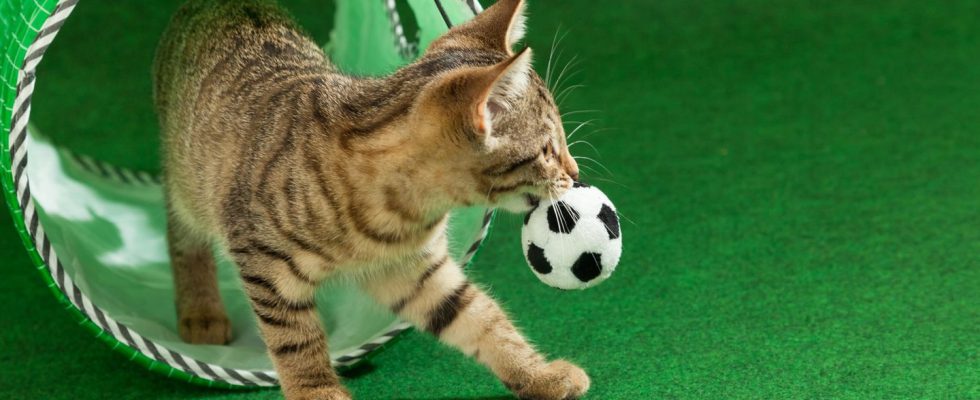study
Dog owners have to be strong now – cats can also fetch
Not only dogs can bring a ball to their owner, cats also know how to do it
© w-ings / Getty Images
Cats can also fetch a stick – but according to their own rules. Most velvet paws retrieve without prior training, as a recent study shows.
When most people think of fetching sticks, they probably think of a dog park in the park, where Bello eagerly runs after a stick or ball and delivers it to his owner on command. But also Cats can retrieve – without any tedious training. This is what Jemma Forman and her team from the University of Sussex found out. They published the results in the specialist magazine “Scientific Reports”.
However, retrieving is a little different for cats than for dogs. Cats don’t even think about following people’s stupid orders. And they wouldn’t allow themselves to be forced to retrieve a ball like a dog. No, as a rule the cats themselves decide which toys they carry from A to B and which person is allowed to play with them. Some cats also use different objects for different people.
Cats play with their owners and not the other way around
“Our results show that cats dictate this behavior to directly influence how their human owners respond to it,” Jemma Forman, lead author of the study, told Northumbria University. A total of 924 cat owners of 1,154 cats were surveyed for the study in order to better understand the retrieving behavior of small velvet paws. Most cats have already demonstrated retrieving behavior as kittens or when they were young. And they obviously didn’t copy it from dogs either – most stick players among cats don’t live with a dog. For 94 percent of cats, retrieving appears to simply be their instinctive behavior.
But not every object is suitable for the game of fetch from a cat’s perspective. The overwhelming majority of house cats like to carry one of their toys from A to B, followed by spherical objects such as Christmas tree baubles or crumpled paper and cosmetics. It’s not just the shape that’s important for some cats, but also the size. This is how a cat owner describes it in the questionnaire: “The size of the pom-pom is important. I bought her a larger pom-pom and she rejected it. I also tried other objects of approximately the same size – but she didn’t want them either.”
8 images
Fetch game: Cats want to be in control
Sometimes a game can start out by surprise for the owner: “While opening a newspaper, the rubber band slipped and flew down the hallway. Waldo chased it, brought it back and dropped it at my feet. I ‘shot’ it again, and he fetched it again.” Study author Jemma Forman would like to encourage cat owners to respond to their cat’s play preferences. It’s just stupid when your own velvet paw develops a real obsession: “I think my cat is obsessed with retrieving. He drops toys on my face in the middle of the night. I don’t want to encourage that because I value my sleep!”
Depending on the cat, retrieving looks a little different: some bring the object back to their owner, others only half the distance and some drop it at an increasingly greater distance from their human. The velvet paws also usually decide when the game starts and when it has to stop. Cat owners also describe in the study that the cats play fetch more often and for longer periods when they initiate it themselves, and not their humans. “This sense of control from the cat’s perspective can have a positive impact on the cat’s well-being and strengthen the human-animal relationship,” said Jemma Forman. Not every cat enjoys retrieving, and those who do do it in their own unique way, the researcher continued.
The behavior, which seems rather untypical for cats, is apparently something they are born with. But a cat that brings its ball to its owner on command would still be more of a miracle – after all, the cat wants humans to respond to its command.
Sources:Study Scientific Reports, Communication University Northumbria


